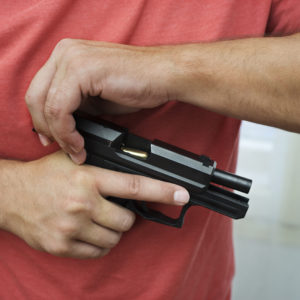Red flag laws are back in the news with a $40 million lawsuit filed by a Virginia teacher who was shot earlier this year by one of her students.
Abigail “Abby” Zwerner, a first-grade teacher at Richneck Elementary School in Newport News, Virginia, was shot and seriously injured by a 6-year-old student in January.
Now, Zwerner has filed a lawsuit against the Newport News school board, alleging that the shooting could have been prevented if school administrators had taken action after being warned not once but four times about the student’s violent tendencies and behavioral issues.
Proponents of red flag laws believe they are an essential tool for preventing public mass shootings and suicides by allowing courts to issue special protection orders that will enable the police temporarily to confiscate firearms from people deemed dangerous to themselves or others.
Red flag laws, also known as Extreme Risk Protection Order laws, have been debated for several years. These laws allow courts to seize firearms from individuals believed to be a danger to themselves or others. While some argue that these laws infringe on Second Amendment rights, others believe they are necessary to prevent gun violence.
The first red flag law was enacted in Connecticut in 1999 after a mass shooting at the Connecticut Lottery headquarters. The shooter, who had a history of mental illness, killed four people before taking his own life. In response, Connecticut passed a law allowing law enforcement to seize firearms from individuals deemed a risk to themselves or others.
Since then, more than a dozen states have enacted similar laws, including California, Colorado, Florida and Maryland. In 2019, after a series of mass shootings, President Donald Trump expressed support for red flag laws at the federal level. However, no such law has been passed.
Marlton, New Jersey, lawyer John Brennan, an expert in red flag laws, explains how the process works. “The process typically involves a hearing, where the petitioner must provide evidence of the individual’s risk. If the court finds that the individual poses a threat, it can issue an Extreme Risk Protection Order, which allows law enforcement to seize the individual’s firearms.”
ERPOs are typically temporary, lasting anywhere from a few days to a year. During this time, the individual may be required to undergo a mental health evaluation or other treatment. Once the order expires, the individual may petition the court to have their firearms returned.
The effectiveness of red flag laws in preventing gun violence is debated. Proponents argue that these laws can prevent mass shootings and suicides by temporarily removing firearms from individuals in crisis. According to a study by the Johns Hopkins Bloomberg School of Public Health, states with red flag laws have seen a 13.7 percent reduction in firearm-related suicides.
However, opponents argue that red flag laws infringe on Second Amendment rights and can be abused by law enforcement or family members with malicious intent. In some cases, individuals have had their firearms seized based on false or exaggerated claims.
While red flag laws are controversial, legislators must carefully consider the potential benefits and drawbacks of these laws. Ultimately, the goal should be to find a solution that balances public safety with individual rights.

